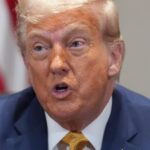Most Canadians couldn’t name a single potential candidate to replace Jagmeet Singh if he steps down after the next federal election, according to a new poll that highlights a recognition gap facing the NDP.
The Abacus Data survey, conducted last week among 1,500 Canadian voters, found that 78% of respondents drew a complete blank when asked to identify possible leadership contenders for Canada’s third-largest federal party.
“What we’re seeing is a party with a visibility problem beyond its current leader,” explains David Coletto, CEO of Abacus Data. “While Singh enjoys relatively strong name recognition, the bench behind him remains largely unknown to average Canadians.”
This recognition vacuum comes at a delicate moment for New Democrats. Though Singh hasn’t officially announced plans to step aside, speculation has grown following his party’s support agreement with the Liberals, which some grassroots members view as compromising NDP principles.
At a community town hall in Burnaby last month, Singh sidestepped direct questions about his future. “I’m focused on delivering for Canadians right now, not leadership races,” he told attendees. But behind the scenes, party insiders suggest planning for succession scenarios has quietly begun.
The poll reveals particularly troubling numbers in Quebec, where only 12% of respondents could identify even one potential leadership candidate. The province once formed the backbone of the NDP’s breakthrough under Jack Layton.
“Quebec has always been this promising but complicated relationship for the NDP,” says Chantal Hébert, political columnist for the Toronto Star. “Any future leader will need to reconnect with voters there if the party hopes to grow beyond its current position.”
When prompted with a list of names, recognition improved somewhat. Manitoba MP Niki Ashton, who has previously sought the leadership, was identified by 31% of respondents. Charlie Angus, the veteran northern Ontario MP, registered with 28%.
But newer faces like Matthew Green from Hamilton and Leah Gazan from Winnipeg – both mentioned in Ottawa political circles as potential future leaders – were recognized by fewer than 15% of those surveyed.
The poll suggests this leadership vacuum could impact the party’s ability to capitalize on progressive policy positions that show stronger public support. Nearly 62% of respondents expressed interest in the NDP’s pharamcare and dental care proposals, yet only 24% said they were “very likely” or “somewhat likely” to vote for the party.
“There’s a disconnect between policy appeal and party connection,” notes Anne McGrath, a longtime NDP strategist not currently affiliated with party headquarters. “Building a broader roster of recognizable voices helps voters see the party as more than just its leader.”
The recognition challenge is particularly pronounced among younger voters aged 18-34, who might otherwise be drawn to the NDP’s progressive stance. Only 11% in this demographic could name a potential leadership candidate unprompted, despite showing the strongest support for NDP policies.
Regional disparities also emerged. British Columbia residents demonstrated the highest awareness of potential leadership contenders, with 32% able to name at least one possible candidate. This likely reflects the province’s NDP provincial government and stronger party infrastructure.
The timing matters. With a federal election required by October 2025, any leadership transition would need to happen relatively quickly afterward to allow a new leader time to establish themselves before the subsequent campaign.
“Political parties function best when they have depth – multiple voices who can connect with different segments of the public,” explains Kathleen Monk, former director of communications for Jack Layton. “Building that roster doesn’t happen overnight.”
Some promising signs exist for the party. The poll found that 41% of respondents believe “it’s time for new voices in the NDP,” suggesting an openness to fresh leadership.
For comparison, similar polling before the Conservative leadership race showed higher recognition levels for potential candidates, with Pierre Poilievre already known to approximately 45% of Canadians before launching his successful bid.
“The Conservatives benefited from a hotly contested, high-profile leadership race that introduced their candidates to Canadians,” Coletto points out. “The NDP hasn’t had that platform recently.”
At a recent policy convention in Hamilton, several potential future leaders received speaking slots, though media coverage focused primarily on policy positions rather than personality politics.
The recognition challenge also represents an opportunity. With few preconceptions about potential candidates, the field remains open for someone to make a strong first impression when a race eventually materializes.
“Sometimes coming in with lower name recognition can be an advantage,” suggests Robin MacLachlan, a former NDP staffer now working as a political consultant. “You can define yourself before others define you.”
For now, the party remains focused on leveraging its agreement with the Liberals to implement progressive policies rather than leadership speculation. But as 2025 approaches, the question of who might lead the party into the following election cycle will inevitably gain prominence.
Until then, most Canadians will continue to associate the NDP primarily with its current leader rather than those who might one day replace him.






